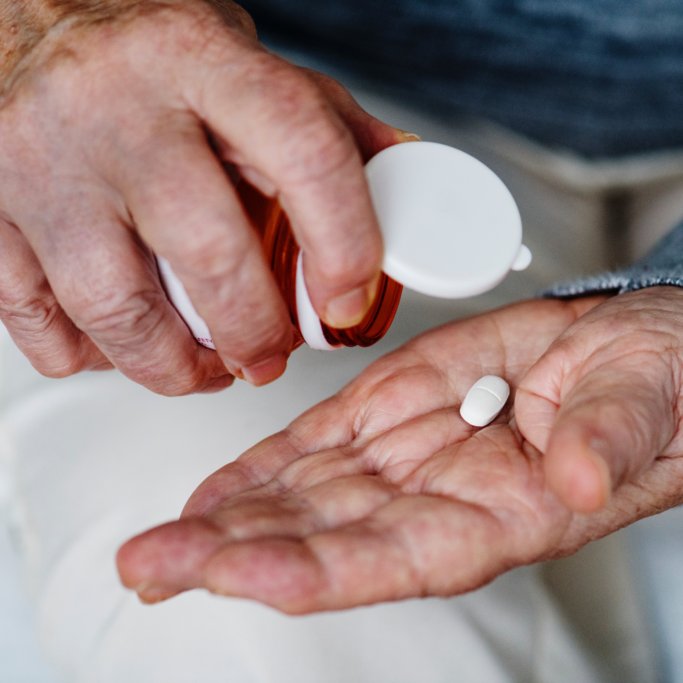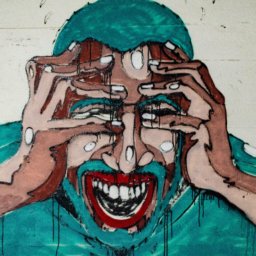People come to doctors for help. Pain is one of the main reasons people turn to healthcare professionals. They seek relief, rehabilitation and a listening ear. But do I express pain in the same way as you? If I suffer from a headache, I may be more inclined to sleep it off than a friend who will search for the paracetamol. We all know that stoic amongst our friends; the one who shows no emotion and rarely appears to be phased by anything. Everyone has their own way of dealing with pain and distress, and culture is its biggest influence.
Culture defines how a person views themselves, their relationships and the things that are important in their life (Kleinman and Benson 2006). It can affect how we dress, what we eat and even what occupation we go into. It has been suggested that individualists make judgments about happiness based on recent emotions, while collectivists base happiness on both emotions and cultural values of satisfaction. Such a perspective influences how a person experiences lapses in their health. It is important to ask our patients: what is important to you?
It has been argued that culture is a fluid process that is recreated through our interactions with people and the inequalities we come across. However, each culture generally has a core set of beliefs and values. For example, when meeting the health needs for Cambodian women in the USA, attention is often paid to their shared cultural strengths such as enduring pain with dignity (Chau, Yu and Tran 2010).
Of course there is a danger of becoming too reliant on culture – it can be too easy to view a group through the rigidity of stereotypes. And we must be aware in this ever-increasing globalized world that cultures can often mix together. For example, Bhui (2011) found that there was a higher risk of suicide in South Asian women, but this did not apply if they were born in the UK, – what external influences could have been introduced that attenuated this risk?
Different societies accept different methods of expressing emotion. This is important not only for the individual, but for the clinician treating who is treating them. We must understand where this expression of distress comes from if we are to respond in an appropriate manner. It has been suggested that patients are most satisfied when their psychiatrist shares their model of understanding distress (Bhui 2002). Some may prefer sympathy; others may want the facts straight away; while others still might want some time alone.
It is necessary to explore a person’s model of belief for illness:
What does illness mean to them?
What are the cultural meanings? A burden? Loss of job? More time with family?
What are the social supports?
How is the doctor viewed? An authoritative figure? Paternalistic?
What is the view on medication? Scared of drugs? Worried about side effects? Little awareness?
Some people in India may use karma to explain illness. In Sri Lanka, youngsters could not understand the idea of feeling ‘numb’ in PTSD (Fernando 2012). In the UK, people may return to their GP again and again with vague complaints, when the underlying problem may be psychosocial, illustrated beautifully in this blog post:


Nichter 2010 described five expressions of idioms of distress:
- Medicine-taking behavior: requests for prescriptions, self-medication
- Biomedical disease nomenclature: associating distress with disease
- Diagnostic tests: expressing distress to others by taking tests
- Healthcare-seeking: searching for a practitioner and a diagnosis
- Changes in consumption patterns: eg. increased smoking – distress communicated nonverbally
If your questions focus purely on the diagnosis, the patients experience is lost, and with that, possible compliance to treatment. Even the word compliance indicates a power relationship between doctor and patient. Blumhagen 1962 cited in Parry 1984 compiled some sample questions to reach past the diagnostic criteria and help explore the issue:
What do you think has caused your problem?
Why do you think it started when it did?
How severe do you think your illness is?
What do you fear most about your illness?
What are the chief problems your illness has caused for you?
What are the most important results you hope to get from treatment?
Expressions can affect the way we see our suffering and how we communicate it to others. Despite these differences, there are some similarities in our idioms of distress. Each disease has a specific set of symptoms; thus, it can be assumed that these criteria can be applied universally. Indeed the idea of global mental health rests on the notion that these concepts of disease can be applied across cultures. There is evidence of such similarities. For example, in Sri Lankan Sinhalese, the term hitha kadaavetuna means “my mind broke” and is used to describe overwhelming grief or trauma (Fernando 2012). If we compare this to the West, we notice that many people also use the metaphor of their mind being broken to describe experiences of depression. It could be suggested that the feeling of having a broken mind may be an etic experience of depression; it is these little things that tie our experiences together across continents and show a shared understanding.
It is important not only to remember the cultural context in which our patient stands, but also the culture in which we reign. We are a part of the culture of healthcare, and this comes with its own boundaries and biases. It has been suggested that training mental health workers should involve an acknowledgement of the alien status of psychiatry in some cultures (Campbell and Burgess 2012). It can be easy for doctors to feel alienated from patients when ones belief is so estranged from their own. Thus, self-awareness of ones own biases is crucial in maintaining an open relationship with the patient.
In 1977, H.M.B. Murphy argued in an editorial in Psychological Medicine that “transcultural psychiatry should begin at home” (Swartz 2012). We must listen to our patients before categorizing them. Psychiatry, like any medical speciality, requires a global currency as a science, yet it still needs to value the importance of people. It is arguably one of the most holistic specialities we have. It is not helpful to wade into another culture with our westernized perceptions of what is health and what is illness. Swartz 2012 reminds us of the image of the colonist man with a bible in one hand and a rifle in the other. Here is such an example (Lee 2012):
A mother, Maria, comes to see a doctor with her teenage daughter who has started skipping school and using alcohol. The mother emigrated from Mexico to the USA, and has difficulty understanding her daughter’s refusal to obey her parents.The doctor has “Eurocentric values” and believes that the mother needs to let her daughter explore her autonomy and distance herself.
Maria finds this advice unhelpful, but due to her beliefs about people in authority, she withdraws quietly.
Another example is the release of the National Mental Health Program in 2002 by the Indian government that placed emphasis on psychotropic medication. Jain and Jadhav 2009 argued that this focus on medication silenced the voices of the community. They noticed that social workers in rural villages took histories of patients, decontextualizing the symptoms into a list from which the doctors could make a diagnosis. The symptoms of the patients were framed through a biomedical lens, and clinical dialogues were structured around compliance. The medication eventually served as a boundary, with psychologists and social workers being seen as assistant doctors and part of the doctors entourage – the power lying in the hands of the prescribers. The clinicians were alienated from the daily lives of their patients, ignoring the idioms used by their patients to describe their suffering.
Although we can create checklists for clinicians to tick through cultural influence on their patients, we must not forget the individual sitting in front of us. Families can adopt new values and may not always be tied to their heritage.
So what can we do? We acknowledge the person sitting in front of us in their entirety. We become aware of any judgments that may cross our mind, and fix our eye on the person with open curiosity. We learn from our patients, and they give us the answers on how we can help them. They are the experts in the room.
Bhui, K. 2002. Explanatory models for mental distress: implications for clinical practice and research. The British Journal of Psychiatry. 181:6-7
Bhui, K. 2011. Cultural psychiatry and epidemiology: Researching the means, methods and meanings. Transcultural Psychiatry. 48:90-103
Campbell, C., Burgess, R. 2012. The role of communities in advancing the goals of the Movement for Global Mental Health. Transcultural Psychiatry. 49: 379-395
Chau, R.C.M., Yu, S.W.K., Tran, C.T.L. 2010. The diversity based approach to culturally sensitive practices. International Social Work. 54:21-33
Fernando, G.A. 2012. The roads less traveled: Mapping some pathways on the global mental health research roadmap. Transcultural Psychiatry. 49:396-417
Ganzer, C., Ornstein, E.D. 2002. A sea of trouble: A relational approach to the culturally sensitive treatment of a severly disturbed client. Clinical Social Work Journal. 30:127-144
Jain, S., Jadhav, S. 2009. Pills that swallow policy: clinical ethnography of a community mental health program in Northern India. Transcultural Psychiatry. 46:60-85
Kleinman, A., Benson, P. 2006. Anthropology in the Clinic: The Problem of Cultural Competency and How to Fix It. PLOS Medicine. 3:e294
Lee, E. A working model of cross-cultural clinical practice (CCCP). Clinical Social Work Journal. 40:23-36
Nichter, M. 2010. Idioms of Distress Revisited. Culture, Medicine and Psychiatry. 34:401-416
Parry, K. 1984. Concepts from Medical Anthropology for Clinicians. Physical Therapy. 64:929-933
Swartz, L. 2012. An unruly coming of age: The benefits of discomfort for global mental health. Transcultural Psychiatry. 49:531-538















Reblogged this on Living with an Illness.
Reblogged this on Writer's Corner and commented:
An amazing insight into the way different cultures treat diseases differently!
very well written.. reblogged this on harshshethblog.wordpress.com
Hello my friend! I wish to say that this post is amazing, nice written and include almost all important infos. I抎 like to see more posts like this.
Good write-up, I抦 normal visitor of one抯 site, maintain up the excellent operate, and It is going to be a regular visitor for a lengthy time.